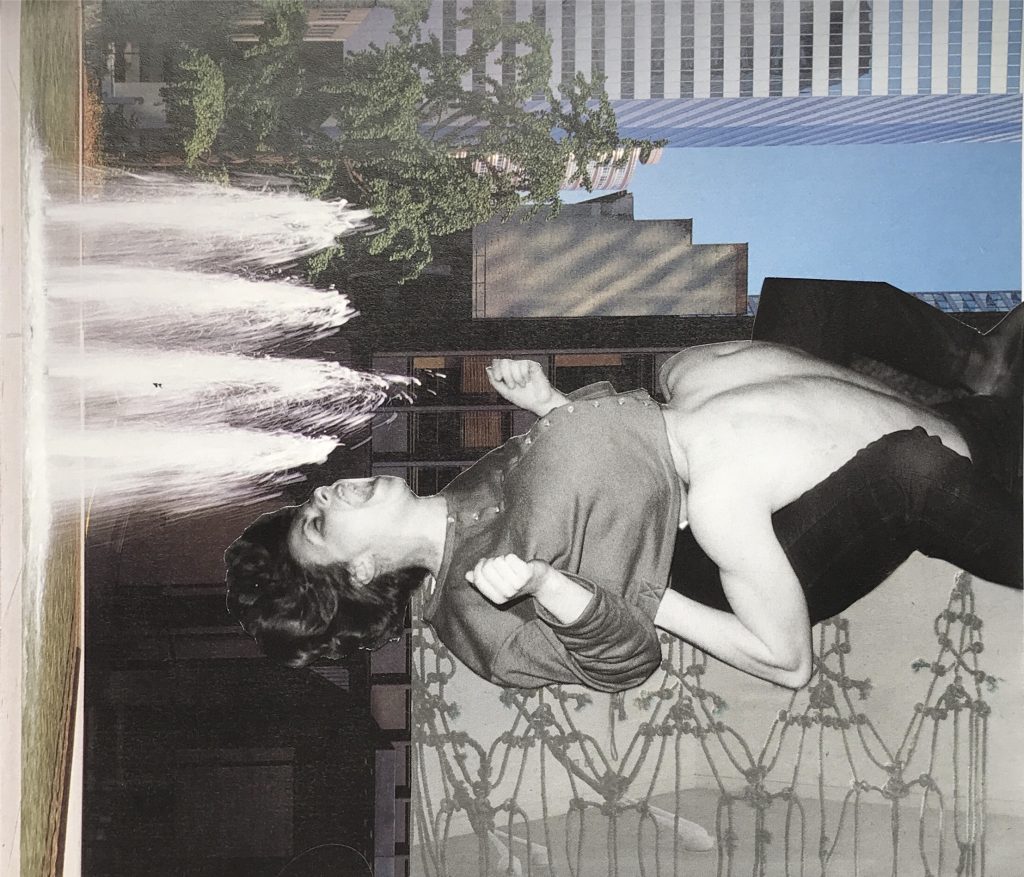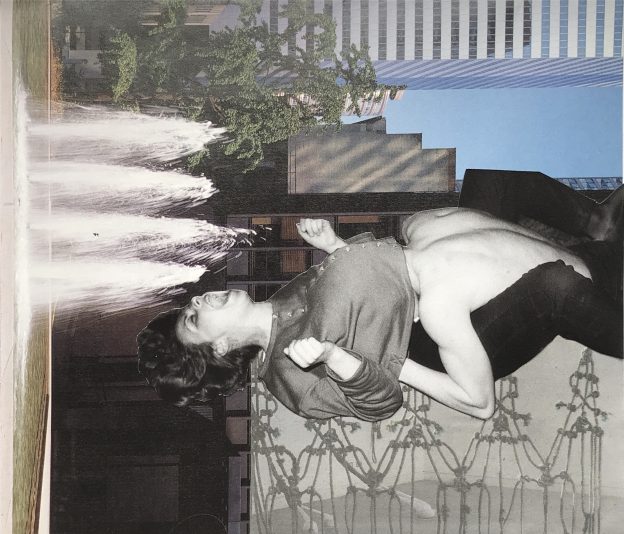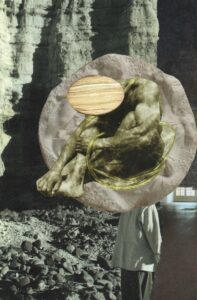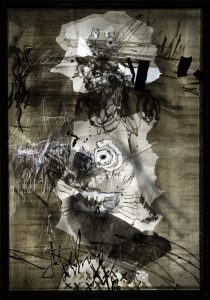The word and concept of ‘Schizophrenia’ was created by the Swiss psychiatrist Eugen Bleuler in 1908 and became well known when his magnum opus was published in 1911 – Dementia Praecox or the Group of Schizophrenias (Bleuler, 1911/1950). Emil Kraepelin’s Dementia Praecox was the previous name for this severe mental disorder, but Bleuler argued that it was too pessimistic – not all persons so diagnosed became ill early in life (‘Praecox’) nor deteriorated cognitively (‘Dementia’). In addition, Bleuler also felt that the name required changing because Kraepelin had overlooked an essential component of the disease – the splitting (‘schizo’) of the mind (‘phrenia’): ‘I call dementia praecox “schizophrenia” because… the “splitting” of the different psychic functions is one of its most important characteristics’ (Bleuler, 1911/1950, p. 8)
However, since the time of Bleuler, the concept of schizophrenia has changed dramatically. It is now conceptualized very differently from how he envisioned it (as a largely psychologically-driven disorder) – and has attracted considerable stigma. Persons so diagnosed are seen as prone to random acts of violence and suffering from a genetic neurobiological disorder that leads to inevitable deterioration. While both of these assumptions are not supported by research (Fosse et al, 2019; Simpson et al., 2004), the stigma attached to the term schizophrenia is now so great that many persons have called for its rejection, in favor of some new, currently less stigmatizing, term.For the time being, the term and diagnosis schizophrenia remains, but has been shorn of all that Bleuler imbued it with. Indeed, mainstream psychiatry disavows the original meaning of schizophrenia as ‘split mind’ and insists that it has nothing to do with ‘split personality’ or, more accurately, dissociative identity disorder (formerly, ‘multiple personality disorder’). Rather, they argue that environmental factors, such as childhood abuse and attachment disturbances, have little to do with this ‘genetic brain disease’. And, paradoxically, many of those working with trauma and dissociative disorders believe that the ‘brain disease’ schizophrenia does exist, but not in their patients (1) – a deeply entrenched conflict of paradigms (Moskowitz, 2011). But is it true that schizophrenia and dissociation/DID have nothing to do with each other? There are at least three enigmas, or mysteries about schizophrenia – curious ways in which it is linked to dissociation or dissociative disorders – that would suggest otherwise. These are connections between dissociation and: 1) Bleuler’s original concept of schizophrenia, 2) Kurt Schneider’s first-rank symptoms of schizophrenia and 3) auditory verbal hallucinations or voice hearing.
BLEULER, JUNG, AND THE BIRTH OF SCHIZOPHRENIA
The centrality of ‘splitting’ to Bleuler’s concept of schizophrenia has long been overlooked (Moskowitz, 2008, Moskowitz & Heim, 2011, 2019). And Bleuler meant dissociation when he used the term splitting. This was recognized by his son, Manfred Bleuler, a psychiatrist who led the same Swiss hospital as his father: ‘He believed that the splitting (the dissociation of thoughts, of emotions, of attitudes and of acting) were close to “primary symptoms”’ (Bleuler, M. & Bleuler, R., 1986, p. 663). In the opening pages of his 1911 book, Eugen Bleuler (1911/1950) wrote:
In every case, we are confronted with a… splitting of the psychic functions. If the disease is marked, the personality loses its unity; at different times different psychic complexes seem to represent the personality… One set of complexes dominates the personality for a time, while other groups of ideas or drives are ‘split off’ and seem either partly or completely impotent. (p. 9; emphasis in original)
This sounds dramatically like how severe dissociative disorders are understood! Later in the book Bleuler (1911/1950) explains his choice of the term ‘splitting’ (‘Spaltung’, in German).
What Gross understands by his term ‘fragmentation’ (or disintegration) of consciousness corresponds to what we call ‘splitting’. The consciousness cannot, however, fragment itself, but only its contents…The term ‘dissociation’ has already been in use for a long time to designate similar observations and findings. But dissociation also designates more: for example, the constriction of the content of consciousness…[and] may thus give rise to misunderstandings. (p. 363)
Thus, Bleuler was insisting on a term, Spaltung, that could be used to describe a division of consciousness, not only the contents of consciousness; this is the way in which term ‘dissociation’ is understood, as a division of consciousness (or better, of ‘personality’; Moskowitz, Heinimaa & Van der Hart, 2019). Bleuler believed that ‘splitting’ was behind all aspects of schizophrenia including, for example, what he called ‘double bookkeeping’ – illustrated by persons who, at one moment, fervently expressed the belief that Bleuler was trying to poison them and, in the next, asked him for a cigarette.
The notion of ‘complexes’ derived from Carl Jung’s research on the word association task. Jung, who worked closely with Bleuler in the early 1900s, inferred the presence of ‘emotionally charged complexes’ stemming from unresolved difficult life incidents from odd responses to words, such as prolonged pauses, strange associations or the forgetting of previous responses (Moskowitz, 2008). He convinced Bleuler that ‘complexes’ played an important role in the expression of symptoms in schizophrenia, which Jung and he confirmed in a joint paper published in 1908 (Bleuler & Jung, 1908). Years later, Jung (1934/1960) made the connection between ‘complexes’ and ‘dissociative parts of the personality’ as clear as possible:
(T)here is no difference in principle between a fragmentary personality and a complex… Today, we can take it as moderately certain that complexes are in fact ‘splinter psyches’. The aetiology of their origin is frequently a so-called trauma, an emotional shock or some such thing, that splits off a bit of the psyche (pp. 97-98).
So, enigma #1 is that the diagnosis of schizophrenia, at its birth, was deeply intertwined with the concept of dissociation and dissociative disorders.
KURT SCHNEIDER’S FIRST-RANK SYMPTOMS OF SCHIZOPHRENIA
Bleuler’s ideas held sway for some time, but gradually faded as the 20th century progressed. And with them, the memory of the connection between dissociation and schizophrenia was lost. Indeed, while Bleuler openly accepted the reality of dissociation and dissociative disorders (though considered most of them to be schizophrenia), the psychiatrist who most shaped the concept of schizophrenia in the 2nd half of the 20th century was outright skeptical of dissociative disorders (Moskowitz & Heim, 2019). Kurt Schneider, whose first-rank symptoms became a core component of the contemporary diagnosis of schizophrenia, considered reports of ‘alternating consciousness’ to be ‘unbelievable’, and claims of ‘multiple personality’ disorder outright ‘deceptions’ (‘Schwindel’) or lies. The idea, as is often seen in DID/multiple personality disorder, that a person can experience and recall events only in one part of his personality but not another was, for him, impossible.
Schneider, in the 1930s, generated a series of symptoms he considered to be predictive of schizophrenia (Schneider, 1937). His writings were not translated into English until the 1950s, and did not impact diagnostic approaches until the 1970s, but when they did, the impact was profound.
Kurt Schneider (1937) argued that the presence of one of a series of nine or ten symptoms indicated a diagnosis of schizophrenia ‘in all cases’ where an organic cause had been ruled out (p. 960). These symptoms included certain forms of auditory hallucinations (voices commenting on one’s behavior, or two or more voices conversing), disturbances of thinking (thoughts experienced as withdrawn from, or inserted into, one’s mind, or broadcast into space), or so-called passivity phenomena (feeling as though one’s emotions, actions, or perceptions were influenced by others). Such symptoms were strongly emphasized in the redesigned diagnostic criteria for schizophrenia from 1980 on (Diagnostic and Statistical Manual of Mental Disorders, 3rd Edition (DSM-III); APA, 1980), to such an extent that only one of them (particularly voices commenting or conversing) was required for a diagnosis of schizophrenia to be given! While this changed slightly with the most recent American diagnostic system, the DSM-5 (APA, 2013), such ideas remain influential in the rest of the world.
Schneider argued that such symptoms indicated a breakdown in the ‘ego-world boundary’ (Koehler, 1979), which he thought particularly characteristic of schizophrenia. In a later publication, he described these as ‘disturbances of the sense of “I”, “me” and “mine”’, which consist in feeling that what one is and what one does have passed under the direct influence of others’ (Schneider, 1950/1959, p. 120).
While this diagnostic approach, with its strong emphasis on specific symptoms considered to be psychotic, dramatically changed the approach to schizophrenia from that with Bleuler envisioned, it gradually became clear that there was another problem – the symptoms were actually more common in dissociative disorders than in schizophrenia (Moskowitz & Heim, 2019). For example, Dorahy and colleagues (2009) found that Schneider’s first rank symptoms of ‘voices commenting’ and ‘voices conversing’ to be twice and five times, respectively, more common in DID than in schizophrenia! Richard Kluft (1987), who mounted the first of these studies, described how first-rank symptoms could be caused by dissociative parts influencing each other: ‘(P)ersonalities (often) state that they have made another see or hear something, influenced another’s perceptions, caused a sensation, impulse, or action in some other alter, or taken away the alter’s memory’ (pp. 297-298).While several studies from dissociative disorders researchers have confirmed these findings, the results have been completely ignored by the schizophrenia field. Indeed, the recent slight de-emphasis of the first rank symptoms in the DSM-5 schizophrenia diagnostic criteria had nothing to do with these studies.
So, enigma #2 is that the ‘psychotic’ symptoms which have been seen as the ‘core’ of the diagnosis of schizophrenia for the past several decades appear, in fact, to be more common in the most extreme of all dissociative disorders, dissociative identity disorder, than in schizophrenia.
AUDITORY VERBAL HALLUCINATIONS (‘VOICE HEARING’) AND DISSOCIATION
The symptom most associated with schizophrenia during this time, and most associated with ‘madness’ in the media, is voice hearing (Longden et al, 2019). Even so, while it has long been recognized that hearing voices commonly occurs in persons given the diagnosis of schizophrenia, they also occur in persons who do not otherwise appear mentally ill. This has been termed ‘pseudo-hallucinations’ to distinguish them from the ‘true’ hallucinations occurring in psychotic disorders (Moskowitz & Heim, 2007). But despite the differing terms, there turns out to be no difference in the phenomenology or experience of hearing voices in persons diagnosed with schizophrenia, with other psychiatric diagnoses, or with no diagnosis at all (Longden et al, 2019; Moskowitz, Longden & Mosquera, 2017). Indeed, a recent exhaustive review of this question found no significant difference on 20 out of 21 aspects of voice hearing (including loudness, personification, perceived location – outside or inside the head) across all clinical and non-clinical groups (Waters & Fernyhough, 2017); only age of onset distinguished the groups, with voice hearing starting significantly later in persons with a diagnosis of schizophrenia.
So, the experience of hearing voices is not only not uniquely associated with schizophrenia, it is common in persons who have had no contact with mental health professionals and appear to be functioning reasonably well. It is also common in dissociative disorders and easily understandable from a dissociation perspective, which has led to the argument that it be considered dissociative rather than psychotic in nature (Moskowitz & Corstens, 2007) (2). This argument has been strengthened over the past decade, with study after study demonstrating strikingly powerful relationships between measures of dissociation in various populations and voice hearing (summarized in Longden et al., 2019 and Moskowitz et al., 2017). This body of research was reviewed in a meta-analysis published a few years ago (Pilton et al, 2015), which found very large effect sizes between measures of dissociation and measures of voice hearing in all clinical and non-clinical groups. The overall effect size of r = .50 in both clinical and non-clinical groups (Pilton et al, 2015) is a very strong finding which, along with evidence that dissociation mediates between childhood trauma and voice hearing, strongly supports a major role for dissociation in voice hearing.
So, enigma #3 is that a very common symptom of schizophrenia, one strongly associated with the diagnosis – auditory verbal hallucinations or voice hearing – demonstrates an extremely robust relationship with dissociation and may even warrant being called ‘dissociative in nature’.
CONCLUSION
From the time it was first proposed as a concept and a diagnosis, more than 100 years ago, schizophrenia has been linked with dissociation and dissociative disorders in at least three ways: 1) Bleuler conceived of it as a dissociative disorder, whose symptoms were psychologically-driven, 2) Schneider proposed symptoms of schizophrenia which turn out to be more characteristic of the most severe form of dissociative disorder than schizophrenia and 3) voice hearing, common in schizophrenia but also in the general population, appears to be dissociative in nature. These are enigmas because schizophrenia is generally conceived – in the public mind and by biomedical psychiatry – as a genetic, biological disorder – the polar opposite of DID which is caused by severe, often sadistic, childhood abuse (Moskowitz, 2011). But childhood trauma is now recognized to be common in schizophrenia, related to the brain abnormalities seen in this condition, and possibly causative in nature (Fosse et al, 2019).
Does this mean that schizophrenia really is split mind – a dissociative disorder? Frankly, we don’t know. It certainly is not the same as DID, as any clinician working with these two disorders can tell you. We won’t know what schizophrenia is (or whatever it is called in the future), until we determine what it is not. And that cannot occur until the schizophrenia field starts to recognize the reality of post-traumatic and particularly dissociative disorders and include such groups as comparisons in all studies of schizophrenia, particularly phenomenological and psychotherapy outcome studies. Only then will we know if Jung was right, and the mystery of schizophrenia’s hidden relationship to dissociation solved:
‘The dissociation in schizophrenia is not only far more serious, but often it is irreversible. The dissociation is no longer fluid and changeable… it is more like a mirror broken into splinters. The unity of the personality which, in the case of hysteria, lends a humanly understandable character to its own secondary personalities is definitely shattered into fragments’ (Carl Jung, 1939, p. 1005).
(1) Notably, the limited research that exists suggests that many persons with DID have been misdiagnosed with schizophrenia, for reasons laid out in this paper.
(2) Actually, Bleuler already recognized this. In 1905, he said: ‘Independent of the conscious personality, wishes and fears regulate ideas… in a compact complex, whose expressions emerge as hallucinations; these appear to be so… deliberate that they simulate a third person. But it is merely a piece of the split-off personality’ (Bleuler, 1905/1918, p. 279).
American Psychiatric Association (1980). Diagnostic and Statistical Manual of Mental Disorders, Third Edition, (DSM-III). Washington, DC: Author.
American Psychiatric Association (2013). Diagnostic and Statistical Manual of Mental Disorders, Fifth Edition, (DSM-5). Washington, DC: Author.
Bleuler, E. and Jung, C.G. (1908). Komplexe und Krankheitsursachen bei Dementia praecox. Zentralblatt f¨ur Nervenheilkunde und Psychiatrie, XIX, 220–7.
Bleuler E. (1950/1911). Dementia Praecox or the Group of Schizophrenias (Trans. J. Zinkin). New York: International Universities Press.
Bleuler, M. and Bleuler, R. (1986). Dementia Praecox oder die Gruppe der Schizophrenien: Eugen Bleuler. British Journal of Psychiatry, 149, 661-664.
Jung. C. G. (1934/1960). A review of the complex theory. (R. F. C. Hull, Trans.), The Structure and Dynamics of the Psyche (pp. 92-104). London: Routledge & Kegan Paul.
Jung, C.G. (1939). On the psychogenesis of schizophrenia. The Journal of Mental Science, 85, 999-1011.
Kluft, R. P. (1987). First rank symptoms as a diagnostic clue to multiple personality disorder. American Journal of Psychiatry, 144, 293-298.
Koehler, K. (1979). First rank symptoms of Schizophrenia: questions concerning clinical boundaries. British Journal of Psychiatry, 134, 236-248.
Moskowitz, A. & Heim, G. (2011). Eugen Bleuler’s Dementia Praecox or the Group of Schizophrenias (1911): A centenary appreciation and reconsideration. Schizophrenia Bulletin, 37, 471-479.
Moskowitz, A. (2008). Association and dissociation in the historical concept of schizophrenia. Psychosis, trauma and dissociation: Emerging perspectives on severe psycho-pathology. Moskowitz, A., Schäfer, I. & Dorahy, M. J. (Eds.) London: Wiley, 35-49.
Moskowitz, A. (2011). Schizophrenia, trauma, dissociation and scientific revolutions. The Journal of Trauma and Dissociation, 12, 347-357.Moskowitz, A., Dorahy, M. J. & Schäfer, I. (Eds.) (2019). Psychosis, trauma and dissociation: Evolving perspectives on severe psychopathology (2nd Ed.). London: Wiley
Moskowitz, A., Heinimaa, M. & Van der Hart, O. Defining psychosis, trauma, and dissociation: Historical and contemporary conceptions, 9-29.
Moskowitz, A. & Heim, G. The role of dissociation in the historical concept of schizophrenia, 55-67.
Fosse, R., Moskowitz, A., Shannon, C. & Mulholland, C. Structural brain changes in psychotic disorders, dissociative disorders, and after childhood adversity: similarities and differences, 159-177.
Longden, E., Moskowitz, A., Dorahy, M. & Perona-Garcelán, S. Auditory verbal hallucinations: Prevalence, phenomenology, and the dissociation hypothesis, 207-221.
Moskowitz, A. & Corstens, D. (2007). Auditory hallucinations: Psychotic symptom or dissociative experience? The Journal of Psychological Trauma, 6, 35-63.
Moskowitz, A., Mosquera, D. & Longden, E. (2017). Auditory verbal hallucinations and the differential diagnosis of schizophrenia and dissociative disorders: Historical, empirical and clinical perspectives. The European Journal of Trauma and Dissociation, 1, 37-46.
Pilton, M., Varese, F., Berry, K. & Bucci, S. (2015). The relationship between dissociation and voices: A systematic literature review and meta-analysis. Clinical Psychology Review, 40, 138-155.
Schneider, K. (1937). Fünf Jahre klinische Erfahrung an der Forschungsanstalt für Psychiatrie. [Five years of clinical experience at the (Kaiser Wilhelm) Research Institute for Psychiatry]. Deutsche Medizinische Wochenschrift, 63, 957-962.
Schneider K. Clinical Psychopathology, 5th ed. (1950/1959). New York: Grune and Stratton.
Simpson, A. I. F., McKenna, B., Moskowitz, A., Skipworth, J. & Barry-Walsh, J. (2004). Mental illness and homicide in New Zealand: 1970-2000. British Journal of Psychiatry, 185, 394-398.
Waters, F., & Fernyhough, C. (2017). Hallucinations: A systematic review of points of similarity and difference across diagnostic classes. Schizophrenia Bulletin, 43, 32-43.
Written by DR ANDREW MOSKOWITZ
Originally published MARCH 2019

Artwork by KATE HOLFORD
© Copyright for all texts published in Stillpoint Magazine are held by the authors thereof, and for all visual artworks by the visual artists thereof, effective from the year of publication. Stillpoint Magazine holds copyright to all additional images, branding, design and supplementary texts across stillpointmag.org as well as in additional social media profiles, digital platforms and print materials. All rights reserved.



